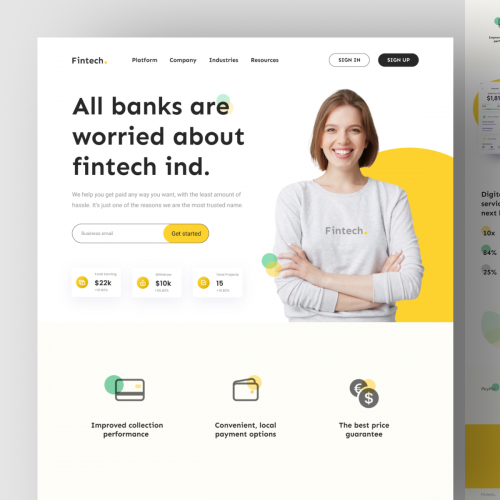Top Tips for Developing an Impactful Web Site Layout That Transforms
To accomplish this, one should consider a selection of variables, including comprehending the target audience, prioritizing customer experience, and enhancing for mobile platforms. The critical usage of compelling call-to-actions and a distinct visual hierarchy plays a crucial duty in directing users via their journey.

Understand Your Target Audience
Understanding your target market is basic to effective web site layout, as it lays the groundwork for creating an appealing individual experience. Identifying who your customers are, including their demographics, choices, and actions, allows designers to tailor the site's content, format, and performance to fulfill particular needs.
Carrying out complete marketing research is important in this process. Studies, interviews, and analytics can give important understandings into individual expectations and pain factors. By compiling this information, developers can create customer personas that stand for various segments of the target market, ensuring that style choices are informed and appropriate.
Furthermore, comprehending the target market helps in choosing ideal design aspects such as color pattern, typography, and imagery that reverberate with users. A web site that talks straight to its audience fosters a feeling of link and trust, motivating longer brows through and higher conversion rates.
Inevitably, a user-centered approach to web site layout not only boosts user satisfaction however also supports organization objectives by driving engagement and loyalty. By focusing on the demands and choices of the target audience, a web site can properly offer its purpose and achieve desired outcomes.
Prioritize User Experience
To improve the overall efficiency of a web site, focusing on customer experience (UX) is important (Website Design). A well-designed UX makes sure that site visitors can browse the website easily, locate details rapidly, and engage with material meaningfully. This brings about increased user complete satisfaction and higher conversion rates
Begin by executing user-friendly navigation. Menus ought to be rationally structured, enabling individuals to situate key areas of the site with minimal effort. Consistency in design aspects, such as shade schemes and font styles, cultivates experience, which is critical for keeping customer engagement.
Additionally, consider the filling rate of your internet site. A hold-up of just a few seconds can result in significant drop-offs, as individuals are less most likely to wait on a slow-loading page. Enhancing images and maximizing code can improve performance and retain site visitors.
By prioritizing individual experience, you not just develop a more pleasurable atmosphere for site visitors yet additionally reinforce your brand's reliability. Eventually, an emphasis on UX is a financial investment in the lasting success of your internet site.
Optimize for Mobile Gadgets
Enhancing for smart phones is vital in today's electronic landscape, where an increasing number of users access websites with mobile phones and tablets. A mobile-friendly layout not just boosts customer experience but additionally plays a significant role in improving online search engine positions. To accomplish this, it is important to take on a responsive style that immediately adapts to different display sizes and positionings.
%20%5B60%25%5D.jpg)
Filling speed is another critical variable; mobile individuals are usually less person and expect fast accessibility to info. Optimize images and utilize web browser caching to improve efficiency. Lastly, test your website on several devices and display resolutions to recognize and correct any prospective usability concerns. By focusing on mobile optimization, you make sure that your site remains affordable and efficiently involves a more comprehensive audience.
Usage Engaging Call-to-Actions
A site's efficiency typically pivots on its capacity to direct visitors towards wanted activities, making compelling call-to-actions (CTAs) vital parts of layout. CTAs work as the critical factors that route customers to engage with the site, whether that implies making an acquisition, enrolling in an e-newsletter, or downloading and install a resource.
To create efficient CTAs, clearness is extremely important. Use concise language that clearly interacts the action you desire the customer to take. Phrases such as "Get Begun," "Subscribe Free," or "Store Now" not only convey seriousness yet also get rid of obscurity. The positioning of CTAs is similarly read the full info here vital; they should be tactically placed throughout the page to ensure they are easily visible, especially in high-traffic locations.
Moreover, the design of CTAs must stick out without being noticeable. Employ contrasting colors and clear typefaces to guarantee they record focus. Additionally, consider utilizing directional hints, such as arrowheads or pictures, to lead users towards these switches. By concentrating on these components, organizations can dramatically boost individual interaction, driving conversions and ultimately attaining their website's objectives.
Emphasis on Visual Hierarchy
Reliable site layout depends greatly on a well-structured visual power structure that guides customers through material seamlessly. By arranging components in a way that focuses on information, developers can boost individual experience and promote decision-making. This involves using dimension, color, comparison, and spacing purposefully to draw focus to the most important components of a web page.
Making use of larger typefaces for headings and subheadings establishes a clear distinction in between various sections, allowing individuals to check content effortlessly. Additionally, utilizing different colors for buttons and calls-to-action can capture customer attention and encourage interaction. Whitespace is one more necessary element; it protects against mess and makes it possible for customers to concentrate on essential messages without interruptions.
Pictures and graphics must enhance the text while likewise adhering to the well-known power structure, enhancing the general message (Website Design). Uniformity in style components, such as color design and typography, further strengthens the visual hierarchy, making navigation intuitive

Final Thought
In verdict, efficient website layout requires a comprehensive understanding of the target audience, prioritization of customer experience, and mobile optimization. Eventually, a well-executed site layout serves as a crucial part in driving user activities and accomplishing business goals.